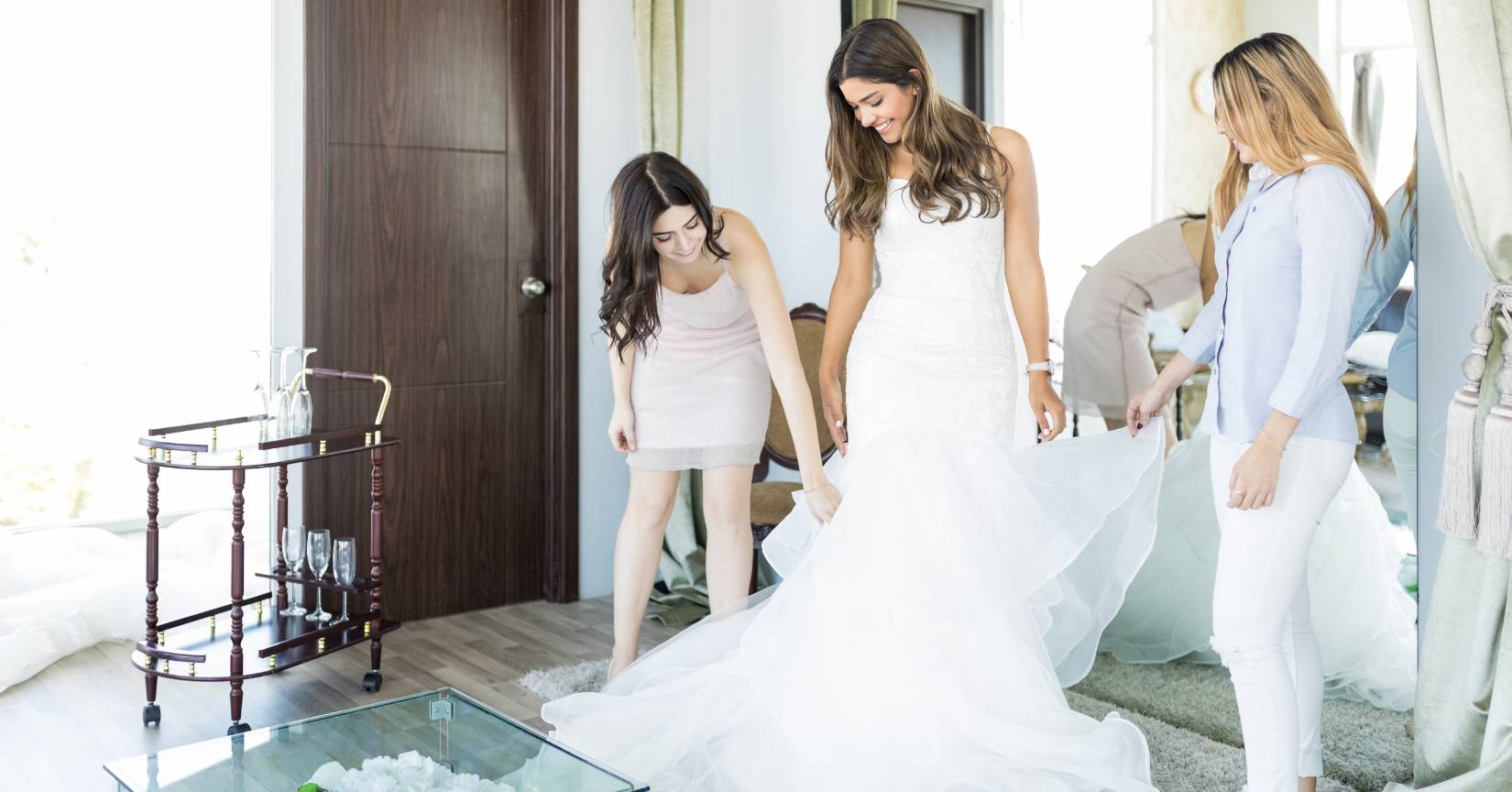

by Lifechoicely
Wedding traditions are a beautiful expression of the diversity and richness of human experiences, and exploring these traditions is a wonderful way to gain a deeper understanding and appreciation for the human spirit.
While the basic premise of a wedding remains the same worldwide, each culture has its own unique traditions and customs that make the day truly special, and the Asian continent is no exception. With a rich and diverse history, the countries of Asia boast a range of fascinating wedding traditions that are steeped in symbolism, rituals and superstitions.
From pre-wedding rituals to post-wedding celebrations, these traditions are a rich and diverse reflection of the culture and heritage of these countries. Here are 48 interesting wedding traditions in Asian countries:
India – Mehndi Ceremony
One of the most popular pre-wedding rituals in India, the Mehndi ceremony is a celebration of love, happiness and fertility. The bride’s hands and feet are adorned with intricate henna designs that are said to bring good luck to the couple and ward off evil spirits.
Japan – San-San-Kudo
The traditional Japanese wedding ceremony involves the exchange of three cups of sake between the bride and groom. This symbolizes the unity of their families and the creation of a new bond.
Thailand – The Dowry
In Thailand, the groom’s family presents the bride’s family with a dowry, which is a symbol of respect and appreciation for the bride.
China – Tea Ceremony
The tea ceremony is an important part of traditional Chinese weddings, where the couple serves tea to their elders as a sign of respect and gratitude. The tea represents the couple’s commitment to each other and their families.
Indonesia – Ruwatan
In Indonesia, the Ruwatan is a pre-wedding ritual where the bride and groom seek blessings from their ancestors and deities. It is a way of asking for protection and good luck for their marriage.
Vietnam – Ao Dai
The traditional Vietnamese wedding attire, the Ao Dai, is a long, form-fitting dress that symbolizes the bride’s purity and elegance. The bride typically wears a red Ao Dai, while the groom wears a black suit.
Korea – P’ye-baek
In Korea, the P’ye-baek is a traditional wedding ceremony where the bride and groom bow to their parents and families, symbolizing the transfer of power from the parents to the couple.
Pakistan – Mehndi & Dholki
In Pakistan, the Mehndi ceremony is a joyous celebration where the bride’s hands and feet are decorated with henna. The Dholki is a pre-wedding music and dance event where the bride and groom’s families come together to celebrate their union.
Sri Lanka – Poruwa Ceremony
The Poruwa ceremony is a traditional Sri Lankan wedding ritual where the bride and groom stand on a beautifully decorated platform and exchange vows. This symbolizes the couple’s commitment to each other and their families.
Malaysia – Berdedik
The Berdedik is a traditional Malay wedding ceremony where the bride and groom offer gifts to their parents as a sign of respect and gratitude. The ceremony also includes the exchange of vows and rings.
Philippines – Cord, Veil & Coins
In the Philippines, the Cord, Veil, and Coins ceremony symbolizes the couple’s unity and the union of their families. The couple is tied together with a cord, symbolizing their love and support for each other. The veil represents the couple’s shared future, and the coins symbolize the groom’s commitment to support the household.
Cambodia – Champa Bouquet
In Cambodia, the Champa Bouquet is a traditional wedding tradition where the bride carries a bouquet of Champa flowers, symbolizing good luck and prosperity for the couple.
Singapore – Tea Ceremony
The tea ceremony is a traditional Chinese wedding tradition that is also practiced in Singapore. The couple serves tea to their elders as a sign of respect and gratitude, and the tea represents their commitment to each other and their families.
Myanmar – Thazin
In Myanmar, the Thazin is a traditional wedding dress that is made from silk and decorated with gold and jewelry. The Thazin symbolizes the bride’s beauty, elegance, and status in the community.
Nepal – Sindoor & Tika
In Nepal, the Sindoor and Tika ceremony is an important part of the wedding day. The groom applies sindoor, a red powder, to the bride’s forehead, and then places a Tika, a red and gold decoration, on her forehead. This symbolizes the couple’s love, commitment, and devotion to each other.
Bangladesh – Shondhi
In Bangladesh, the Shondhi ceremony is a pre-wedding ritual where the bride and groom seek blessings from their parents and families. The ceremony is also a time for the families to come together and celebrate the couple’s union.
Laos – Baci Ceremony
The Baci ceremony is a traditional Laotian wedding ritual where the couple is surrounded by their friends and family, who tie white cotton threads around their wrists. The threads represent the couple’s love, unity, and good luck.
Taiwan – Double Happiness
The Double Happiness symbol is a popular symbol in Taiwan, and is often seen at weddings. The symbol represents the couple’s happiness and the joining of their families.
Mongolia – Deel
In Mongolia, the Deel is a traditional wedding dress that is made from silk and decorated with embroidery, fur, and jewelry. The Deel symbolizes the bride’s beauty and status in the community.
Hong Kong – Wedding Banquet
In Hong Kong, the wedding banquet is an important part of the wedding day. The banquet is a time for the couple’s families and friends to come together to celebrate their union and wish them good luck in their future together.
Bhutan – Chipdrel
The Chipdrel is a traditional Bhutanese wedding ceremony where the bride and groom are escorted by a procession of friends and family to the wedding venue. The procession is accompanied by music and dancing, and symbolizes the couple’s love and unity.
Tibet – Butter Lamp Ceremony
The Butter Lamp ceremony is a traditional Tibetan wedding ritual where the couple lights a butter lamp, symbolizing the light of their love and the warmth of their home. The ceremony is a symbol of the couple’s commitment to each other and their families.
North Korea – Wedding Banquet
In North Korea, the wedding banquet is an important part of the wedding day. The banquet is a time for the couple’s families and friends to come together to celebrate their union and wish them good luck in their future together.
South Korea – Paebaek
The Paebaek is a traditional Korean wedding ceremony where the bride and groom bow to each other, symbolizing their love and respect for each other. The ceremony is accompanied by traditional music and dance, and is a celebration of the couple’s union.
These are just a few examples of the rich and diverse wedding traditions that are practiced across the Asian continent. Each tradition adds to the beauty and uniqueness of the wedding day, making it a truly special and memorable experience for the bride and groom and their families.
Related Articles
Related
Bridal Shoes Buying Guide: 12 Tips You Need to Know
Did you ever realize that the choice of your wedding day shoes could be the secret to making or breaking your entire bridal experience?While they might seem like a small part of your overall attire, the right pair of bridal shoes can enhance your comfort, style, and...
10 Frequently Observed Wedding Traditions Around The World
Wedding traditions vary from culture to culture, but have you ever wondered why some traditions seem prevalent world-wide? It turns out there are interesting explanations for these unique practices.A wedding is an important milestone for couples and their families,...

